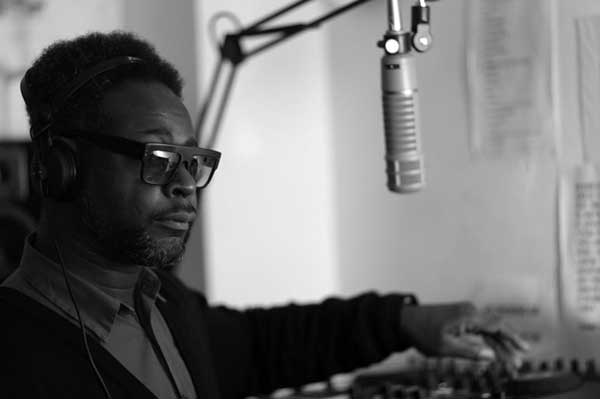| 5 Minutes with… A Guy Called Gerald | |
| The Playground 5th August 2014 Link |
|
 A Guy Called Gerald is the gateway between Chicago House/ Detroit Techno and the Uk Dance explosion in the 80’s. The first, if not only, Acid House producer to have 2 instrumental dance tracks in the UK charts at the same time. His visions, stylistic versatility and open-mindness helped forge the development of global dance culture and helped to pioneer the Jungle/ Drum & Bass scene, with “blueprint” tracks like “28 Gun Badboy” and his critically acclaimed “Black Street Technology” album. A Guy Called Gerald is still touring worldwide, playing anywhere from 2 to the now legendary 14 hour sets – no DJ software, no gimmicks, just pure undiluted beats strictly for the dancefloor. Hey, how are you and what are you up to today? I’m in the studio making music as usual and I’m more than ok, I’m in my element. What tracks inspired you to become a producer? I would say some electro funk tracks from the early 80’s – like Planet Rock and Looking for the Perfect Beat by ET Boogie. What tools did you use when first starting out on the scene? First of all, when I started out, there wasn’t a scene. I used Roland TR808, TB303, SH101, MC202 and Roland Alpha Juno 2 and Juno 106 keyboards. You’ve branched out to the digital side of music making. What made you convert? Were you ever reluctant to change? From what? I’ve always been using digital machines. It’s just that the dance music community has decided to separate one part of the technology from another. I basically use the available technology as long as it works. I’m way too old to get caught up in the retro fetishism of machinery. In my world, all electronic instruments and computers are welcome. What is important is what comes out of the speakers. How has it evolved your DJ’ing? What current tool are you using now? For DJing I love using Traktor Touch on the ipad. It’s very malleable and I can instantly jump inside a loop and micromix my way out of one track into another. I can invent breaks inside loops that used to take me hours to do on an Akai sampler. I’m not scared to use the technology and the environment around me. DJ is simply playing music I love and this allows me to do it in a way that nobody else does. How would you describe your style of DJ’ing? Versa-style. This means every single genre that has happened from electro funk through to bass / break house is all available for me to mash into my versa-style. You’ve been at the beginning of many genres and even inspired a few. Are there any new sounds that feel like it’s the start of something new for you? At the moment I’m loving hearing that old chisel bass from Voodoo Ray being used in all this new British house. Makes me feel that people are actually listening and feeling what I was doing. I guess beyond this we will be pushing forward once we realise that you can only be retro for so long. I’m looking forward to hearing some new sounds coming from new producers – not just a new genre name change because you’ve used a new soundfont. What are your opinions on the current health of the electronic music scene? It needs to be more sexy. You had huge success with hit “Voodoo Ray.” Did you sense you had a hit in the making? No. “Black Street Technology” is highly regarded in the Drum & Bass scene. What made you go from Acid House to Intelligent Drum & Bass? What inspired you to create this album? The album was part of a progression. That was where I was in 94-95. Voodoo Ray was where I was from 86-88. One of the things that alot of people don’t realise about Voodoo Ray was it was the first UK Acid House tune inspired by Chicago and Detroit. In those days I was always on the outside of the rave scene. I wasn’t part of the rave scene but 28 Gun Bad Boy was my reaction to the rave scene. Black Secret Technology was a progression of 28 Gun Bad Boy. I was always trying to perfect what I was doing in the studio. These albums are the result. What can fans expect from your upcoming performance at KOKO 16th August? The 90’s was all about freezing your music on plastic. I feel technology has got to a level where I’m allowed to express myself freely the way I was trying to do in the late 80’s when I used to play live with the studio machinery. Now the studio is virtual. Who knows what the future brings? A DJ who plays pre-recorded material can tell you what to expect. I am a futurist so all I can hope is I can help pull you into the future of dance music. Catch A Guy Called Gerald – Live In Session play alongside James Lavelle (U.N.K.L.E), Derrick May, Barem, FKJ, Richard Fearless (Death In Vegas) and Let The Machines Do The Work 16th August @ KOKO. [Author: Alex Lewis] |
|